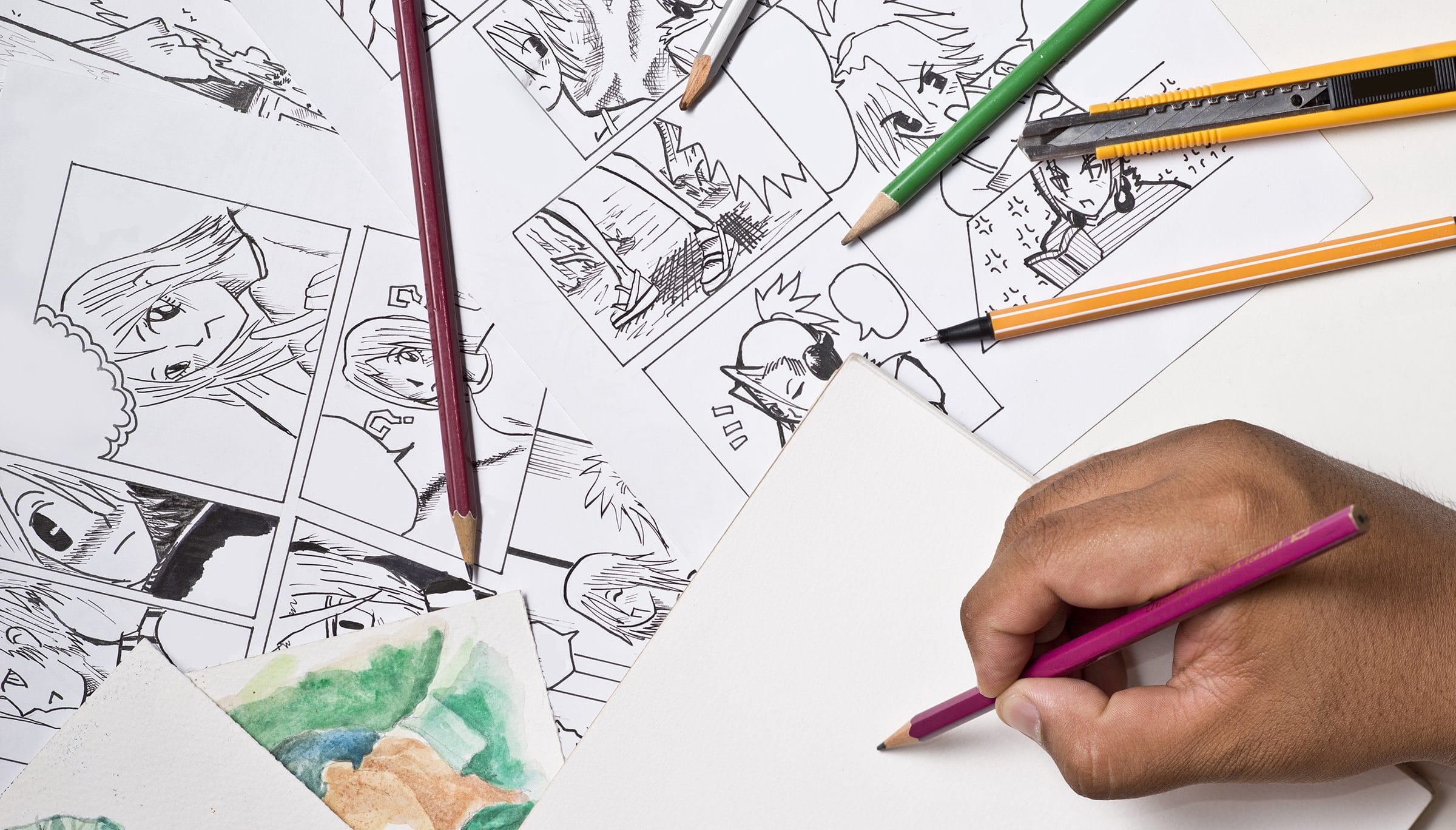

December 5, 2022
Comics are more popular than ever. The enormous success of the Marvel and DC comics has created blockbuster movies and spawned hundreds of spinoffs. Here are the steps you’ll need for writing and publishing your comic book or graphic novel.
Before publishing your comic book, it’s helpful to know the terms commonly used by printers and publishers.
Comics aren’t just for superheroes. Comic book publication includes every genre and plot type:
Publishing your comic book involves writing and pictures. If you plan to draw your own pictures, you have full control of the way your comic looks and feels. If not, you’ll have to find an artist who matches the style of your comic book.
The basic elements of every comic book are:
These are the building blocks of every comic book. Within those guidelines, you can be as traditional, creative, or funny as you want. Just be sure you have all these in mind when you begin planning your book.
Are you raring to get going on your comic book? Most people think they need to start with the illustrations since those are the first things you think of when you see a comic book. However, starting with the drawings is a mistake.
The story is central to a good comic book. The best drawings in the world won’t make up for a poorly plotted story or uninteresting characters. It’s important to remember that the story and text must drive the drawings and not the other way around.
If you think about the most popular and most respected comics, you’ll notice they all have solid plots, well-developed characters, and a consistent theme that runs from beginning to end.
Outline your story before you begin writing. Create a plot that your readers will want to follow, and remember to include action, transitions, a climax, and a resolution. Present the main character and secondary characters your readers enjoy spending time with.
To write your story, use the same six elements of plot you would use to write a fictional book or screenplay.
These are the elements of a story that keeps readers interested.
Create the story first, and then decide what drawings you’ll need. You’ll soon discover that it’s much easier to change your writing than it is to have to constantly redo your drawings because of a plot change.
Experienced comic book artists know that illustrations must have consistency. The drawings must show the same style and colors from the first panel to the last. The characters and settings must look the same in each panel.
If you’re a beginning artist, keep the drawings simple. Don’t get bogged down trying to create complicated drawings you’ll have trouble replicating every time the character or setting appears.
Are you an experienced artist? You will have an advantage over beginning artists, and your drawings may be the most striking part of your comic book. Just be sure to keep a consistent style.
Is your comic book a stand-alone book or part of a series? If you try to get your comic published by a commercial company, you will have to indicate whether your characters are one-time creations or part of a larger story. A company will want to know this when it decides to publish your comic book.
If you plan to self-publish your comic book, you can make that decision later. You may decide to create a second comic book based on those characters, or you may choose to write a new story. The choice is yours.
Keep the dialogue short. Each panel should contain two to three sentences at most.
Let the drawings do the work of moving the story along. If a panel depicts a particular action, you don’t have to explain it in a speech bubble or the caption.
Every panel should show character development or plot movement. Remember, this is not a novel. A comic book is visual, and your readers want to see pictures that tell the story. Only include dialogue that’s necessary for developing a scene or moving the plot along.
How will you handle transitions from one panel to the next? Here’s where consistency in your illustrations will pay off. Each panel should flow smoothly to the next one, and consistent drawings help you do that.
Do you know what it takes to publish your favorite comic books? If you are looking at a full-color, commercially published comic, it most likely involved the following team members.
As you can see, a lot of work goes into a typical comic book. If you plan to write and publish a comic book yourself, you’ll have to do all those jobs yourself. On the other hand, some successful comic book artists have done just that. Creating a comic book is an intensive learning experience that will stretch your creativity.
Comic book publication requires a skilled printer who will print your panels in beautiful, full-color resolution. At Publishing Xpress, we specialize in working with independent comic book writers. If you want your comic book to look its best, we can help.
Check out our online calculators for a quote on how much it costs to print comic books.
© 2024 Publishing Xpress. All Rights Reserved.